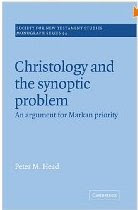(In French) This article presents a morpho-syntactic overview of the Noun and Nominal Group in Mundani, a Grassfields Bantu language of West Cameroon. It presents first a detailed description of the Mundani noun itself (the "Basic NP"), based on a corpus of about 1,500 noun roots. Nouns are divided according to the system of Proto-Bantu into 13 classes, themselves grouped into 9 genders distinguished not so much by their semantic content as by their prefixes, and by the morphological agreements that they trigger within a larger nominal group. This wider nominal group (the "Secondary NP") may combine a nominal with different independent lexical and grammatical elements in a fixed linear order. Five types of Secondary NP are identified on the basis of their syntactic functions and are described in detail.
"Le nom et le syntagme nominal en mundani"
(In French) This article presents a morpho-syntactic overview of the Noun and Nominal Group in Mundani, a Grassfields Bantu language of West Cameroon. It presents first a detailed description of the Mundani noun itself (the "Basic NP"), based on a corpus of about 1,500 noun roots. Nouns are divided according to the system of Proto-Bantu into 13 classes, themselves grouped into 9 genders distinguished not so much by their semantic content as by their prefixes, and by the morphological agreements that they trigger within a larger nominal group. This wider nominal group (the "Secondary NP") may combine a nominal with different independent lexical and grammatical elements in a fixed linear order. Five types of Secondary NP are identified on the basis of their syntactic functions and are described in detail.
Subscribe to:
Post Comments (Atom)













No comments:
Post a Comment